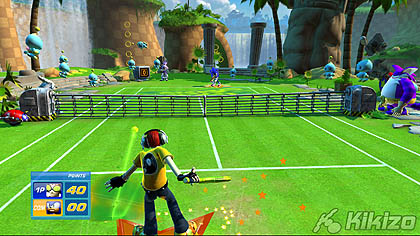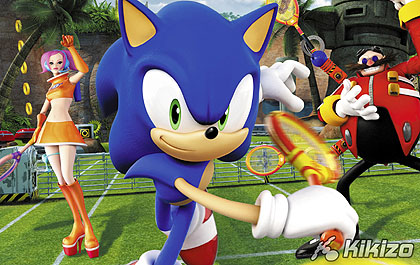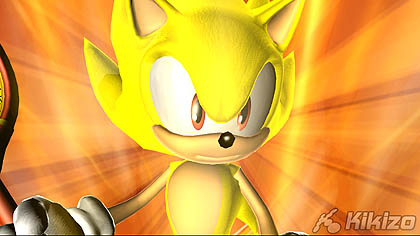Interview: Sega Superstars Tennis
Sumo Digital casts a Sega dream with Kikizo. Steve Lycett on working with Sega Japan, Sega fanboys and OutRun3.
Page 2
Lycett: It gives us much more scope to do new courts, much more scope to do interesting characters. And with Superstar [special moves] stuff it gives us lots of inspiration there as well. So we kind of did the things we wanted, and suggested them, and in many cases, they went in. I mean, everything does have to be approved by the original creators - there's no two ways about it, we have to adhere to the spirit of the games, if not completely to how the games work. Things like Puyo for example - we originally had the Puyos joining up, but the new rule in Japan is the Puyos don't join, and so they made very clear that's the way that had to work.
I think probably the most difficult one to get right was probably Ulala's Space Channel stuff; not from an approvals point of view, but just because we were taking Dreamcast assets and upgrading them. When we did them first, they were almost too western, and we went back and talked to [Mayumi] Moro-san, who's the Space Channel creator; she was very specific about how things should be more, uh, Japanese. And so we bounced things around and made those changes. I mean things like the Morolians, the Morolians are exactly 140cm high, and they can't be any taller or shorter. And in one screen we had one which was slightly taller, and we never noticed - just completely bypassed it, an artist error - and we got back a mail saying "this one's too tall, can you please shrink it down by x amount of pixels, to the actual size". So they're very specific, but nobody's been a problem to work with. In fact if anything, they've been super supportive. The Monkey Ball team in particular - every time we sent a build of the game to them, they just came back with more and more ideas! He's like oh, this is great, but it would be great if you try and do this! So we try and take that on board wherever we could.
Kikizo: Yeah, we've had our own issues in the past, like when we were trying to get our OutRun2 gameplay videos approved and be the first ever site to show it back in 2004. We got there in the end, but it took weeks of approvals and doing new footage.
Lycett: It's kind of funny. I suppose from their point of view they always want to see their games [shown] in the best light, I know when we did the Japanese version of OutRun2 we made one or two changes, and it was bizarre attention to detail - one of the courses, we had a mail saying at this position on the track, or so many metres in, the flowers need to be moved one pixel to the right. It's strange, but we're kind of happy to do that, because we want to continue to have the trust with those guys. Even if it means changing the shade of white fifteen times on a car - you know.
Kikizo: I was asking Travis earlier as well if you were joking or not about there being a Shenmue court in the game, can you give a straight answer on this one now please?
Lycett: Basically, when we made the game, we made a list of characters that we wanted, but we also had to make sure that we could do the game in time. Each character has something like 150-200 animations, and because the game is very animation driven, if the animations take too long [on screen] it will actually break the way the game plays. So we basically had to do three things with animations: one, make them look like the original characters, two, make sure the game is still to play, and then three, get it past the original creators.
When you look at the process like that, you have to limit the amount of characters you've actually got. We thought sixteen separate characters with their own set of animations, is probably enough this time around. In the future, we've got more characters or assets that we could look at if we want to do another game like this, but we just have to pick a list of characters that people know. And as much as people love Shenmue, you know, he's one of those characters that fell by the wayside as a result.
I mean the other thing, and I'll say this specifically, is we tried to get characters which fitted together on screen; although Ulala is humanoid, she's still very cartoony. Ryou has a look, which is very human, and it might have looked out of place. So it's kind of an artistic decision as well.
Kikizo: I've also heard that the DS version is particularly good, rather than half-arsed...
Lycett: At Sumo, this is something we always try to do; we don't just threat the handhelds as being a lesser platform, we try and make sure the game is as good on all platforms as it can be. So OK, we've got limitations to work with, but you know, let's do our best job. The DS version was written completely from scratch because we couldn't re-use any code, and it captures the feel of the games. And of course it's got local multiplayer. We use the system to its best.














 Satoru Iwata Video Interview - the late Nintendo president spoke with Kikizo in 2004 as 'Nintendo Revolution' loomed.
Satoru Iwata Video Interview - the late Nintendo president spoke with Kikizo in 2004 as 'Nintendo Revolution' loomed. Kaz Hirai Video Interview - the first of Kikizo's interviews with the man who went on to become global head of Sony.
Kaz Hirai Video Interview - the first of Kikizo's interviews with the man who went on to become global head of Sony. Ed Fries Video Interview - one of Xbox's founders discusses an epic journey from Excel to Xbox.
Ed Fries Video Interview - one of Xbox's founders discusses an epic journey from Excel to Xbox. Yu Suzuki, the Kikizo Interview - we spend time with one of gaming's most revered creators.
Yu Suzuki, the Kikizo Interview - we spend time with one of gaming's most revered creators. Tetris - The Making of an Icon: Alexey Pajitnov and Henk Rogers reveal the fascinating story behind Tetris
Tetris - The Making of an Icon: Alexey Pajitnov and Henk Rogers reveal the fascinating story behind Tetris Rare founders, Chris and Tim Stamper - their only interview? Genuinely 'rare' sit down with founders of the legendary studio.
Rare founders, Chris and Tim Stamper - their only interview? Genuinely 'rare' sit down with founders of the legendary studio. The History of First-Person Shooters - a retrospective, from Maze War to Modern Warfare
The History of First-Person Shooters - a retrospective, from Maze War to Modern Warfare